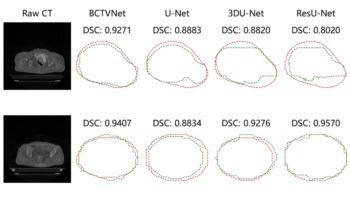New computer simulations of impacts into the Martian surface have found impacts that produce craters as small as three kilometres across can launch decimetre-sized fragments of rock into space. James N. Head of the University of Arizona, and an international team of co-workers, performed high-resolution computer simulations of homogenous and layered meteorites, to try and account for the ages and characteristics of Martian meteorites found on Earth. These minimum crater diameters are at least four times smaller than previous estimates. They also find that the minimum required crater diameters depend on the physical composition of the target material (James N. Head et al. 2002 Science to appear)
Previous computer models supposed that meteorites were launched from large craters. These models were, however, unable to account for the relatively large number of small and young Martian meteorites found on Earth. Now, Head and colleagues have shown that the velocities of smaller lumps of ejected material can overcome the escape velocity of Mars. “Previous analytical solutions used less-sophisticated equations of state than used in our computer code, ” explains Head, “In each case, the diameter of the minimum sized source crater was overestimated.”
The results also show that regions of Mars’s surface covered by a relatively thicker layer of material require larger – and thus less frequent – impacts to eject rocks into space. As older regions are more likely to be covered with such material, the researchers think that the Martian meteorites we find on Earth are likely to come from younger rock. This agrees well with the age and size ranges of terrestrial Martian meteorite samples studied.
The age distribution of the Martian meteorites should remain unchanged as more samples are discovered. Owing to the slow discovery rate of one sample every two years or so, the group will only have enough new samples to confirm the results in about ten years time.
This work could help meteoriticists shed light on where life on Earth originated. “Besides estimating the total mass of potentially biological material ejected from Mars, we calculate directly the acceleration history of the ejected fragments,” says Head. Bacterial spores, for example, from Mars could survive the immense acceleration of meteorite ejection and might successfully make the journey to Earth.



